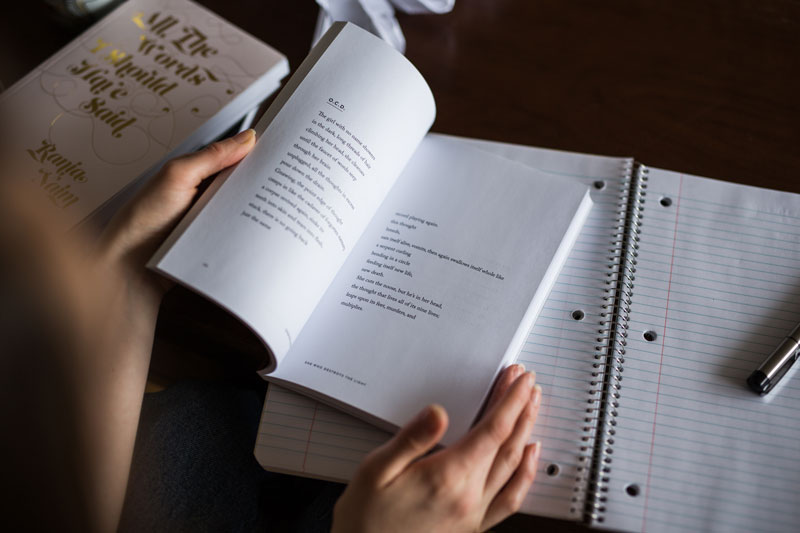
Thriller Writing
If you are dedicated, determined and love this exciting genre, the course will show you how to understand…
Learn more…| No. of lessons: | 12 |
| No. of exercises: | 29 |
| Average duration: | 9-15 months |
| Fee paid in full | £365.00 |
| Fee paid in instalments | |
| Deposit: | £100.00 |
| Monthly payment: | £70.00 |
| Number of payments: | 4 |
| Total fees: | £380.00 |
Receive a graded Diploma upon successful completion
Work with experienced journalists during your course
Work at your own pace and start at a time that suits you
Although writers attract the plaudits (and brickbats) of the literary world, those who work on the editorial side of the business are largely responsible for the finished product. Checking for the accuracy of information and avoiding any legal pitfalls has always been too important to leave solely in the hands of the writer!
Successful subediting is not only an art, but also a very skilful business. It requires an organised mind and a cool disposition, as well as flair, imagination, an eye for detail and an ability to thrive under the pressure of deadlines.
In the early part of this course you are taken through the maze of legal responsibilities and restraints affecting every type of publication. Having understood this, you will learn in detail the range of technical skills required of the subeditor in preparing a newspaper or magazine for print.
The subeditor's precise role, the subbing process and what is meant by 'house style' and 'newspaper English'. The importance of correct grammar, spelling and punctuation; how to transform lacklustre prose into concise, vigorous language - and check all the facts in the process.
Assessment tasks include:
Identifying personal aims
Researching the effective - and inappropriate - use of Newspaper English
Learning the importance of accuracy, balance and consistency. Developing a keen 'news sense', and understanding how to structure an effective news story by identifying the strongest angle and intro.
Assessment tasks include:
Editing news fillers for publication
Cutting and rewriting longer stories
How to identify and eliminate wasteful words and avoid using inverted sentences, jargon, clichés and slang. Knowing how to use proof-correction marks; editing and cutting copy against the clock.
Assessment tasks include:
Re-writing poorly constructed news intros
Proof correcting
Learning when the law restricts what you can write and how to avoid costly legal action. The buck stops where? The dangers of libel and other pitfalls; qualified privilege and unintentional defamation; criminal libel; and the need for fairness and accuracy. Fair comment, malice and slander are explained, along with the risks and implications of mistaken identity.
Assessment tasks include:
Reviewing passages for libellous content
Handling a variety of legal dilemmas
How to write lively, accurate and appropriate headlines that fit the space available. Exploring the differences in approach on news, sport and features pages: the role of headlines in selling stories to the readers. The need for originality and the pitfalls involved in puns and wordplay; the role of straplines, subheads and taglines. How to recognise stories that call for 'special treatment'.
Assessment tasks include:
Identifying effective and inappropriate headlines
Writing headlines to length for real news stories
Learning how to convey a variety of messages through the use of type: the factors which decide an editor's approach to design and layout. Getting to grips with some basic design principles; how different techniques are used to achieve specific effects.
Assessment tasks include:
Conducting a design analysis of national or regional titles
The rights enjoyed by the Press and how these relate to those of the private citizen. What is meant by contempt of court; how to recognise situations or stories in which there is a danger of potential contempt. Learning about reporting restrictions, and the particular dangers relating to the coverage of the youth courts and sexual offences. The role and relevance of the Official Secrets Act.
Assessment tasks include:
Identifying which reporting restrictions apply in different circumstances
Handling a range of legal dilemmas in stories for publication
How to handle and process copy for publication. What options are open for approving, correcting, cutting, changing or 'spiking' stories. A variety of practical subediting tasks help to reinforce the importance of correct spelling, punctuation and grammar, along with ways of tackling some of the taste and ethics issues faced by the subeditor.
Assessment tasks include:
Identifying and correcting incorrect spelling and punctuation
Editing copy for publication
Planning a publication from scratch: the steps involved in formulating a clear working brief. How to draw up a flat plan and use it to plan content. Drawing up a design brief; the principles behind modular page design. Selecting typefaces appropriate to the character of the publication you are planning.
Assessment tasks include:
Planning the content and front-page layout for an 8-page A4 newsletter
Exploring the means of achieving maximum impact from page layouts; using rules, borders, anchors, hampers and sidebars. How to crop and size pictures and how to incorporate a variety of other design elements: raised and drop capitals, tints, reversals, boxes and borders, in creating complex news and features pages.
Assessment tasks include:
Sizing and positioning pictures
Incorporating text, pictures and other design elements in finished page designs
Another hands-on opportunity to put your new skills to the test, this time focussing on headline-writing and page design tasks, consolidating and revising the skills you have learned to date.
Assessment tasks include:
Writing headlines for publication
Drawing up pages, incorporating text, pictures and headlines
This final lesson gives you the vital preparation required to launch your subediting careers, whether on a full-time or part-time basis. Detailed revision notes provide an opportunity to tie up any loose ends in your training, with business-like advice aimed at pursuing a professional approach to future subediting assignments.
Assessment tasks include:
Drawing up a personal 12-month action plan with clear achievement targets

If you are dedicated, determined and love this exciting genre, the course will show you how to understand…
Learn more…
The ability to communicate effectively is a priority for anyone wishing to succeed in business. …
Learn more…
If you have an understanding of English History from Roman Britain to the European Union you will…
Learn more…
The great advantage of freelance writing is that it can be done either in conjunction with another…
Learn more…
The great advantage of freelance writing is that it can be done either in conjunction with another…
Learn more…
The great advantage of freelance writing is that it can be done either in conjunction with another…
Learn more…
The great advantage of freelance writing is that it can be done either in conjunction with another…
Learn more…
This course was written specially to help those who want to write straightforward, correct English…
Learn more…
This course will train you in a whole range of skills, all of which are required for a successful…
Learn more…
This course takes the form of 12 lessons which incorporate reading, writing and revision assignments…
Learn more…
This 12-lesson course is designed to give a basic understanding of how to create web content as …
Learn more…
A good novelist offers the reader a story in which events and actions have logical but unpredictable…
Learn more…
Poetry has enjoyed a revival in the last five years, with more people writing and reading it than…
Learn more…
What is a romantic novel? It’s usually a story in which boy meets girl, boy loses girl, then …
Learn more…
Although writers attract the plaudits (and brickbats) of the literary world, those who work on the…
Learn more…
Whether a short story is meaningful and gritty or light entertainment, a good one is a work of art…
Learn more…
Most people have fond memories of books that they read as a child, stories that made them laugh, …
Learn more…